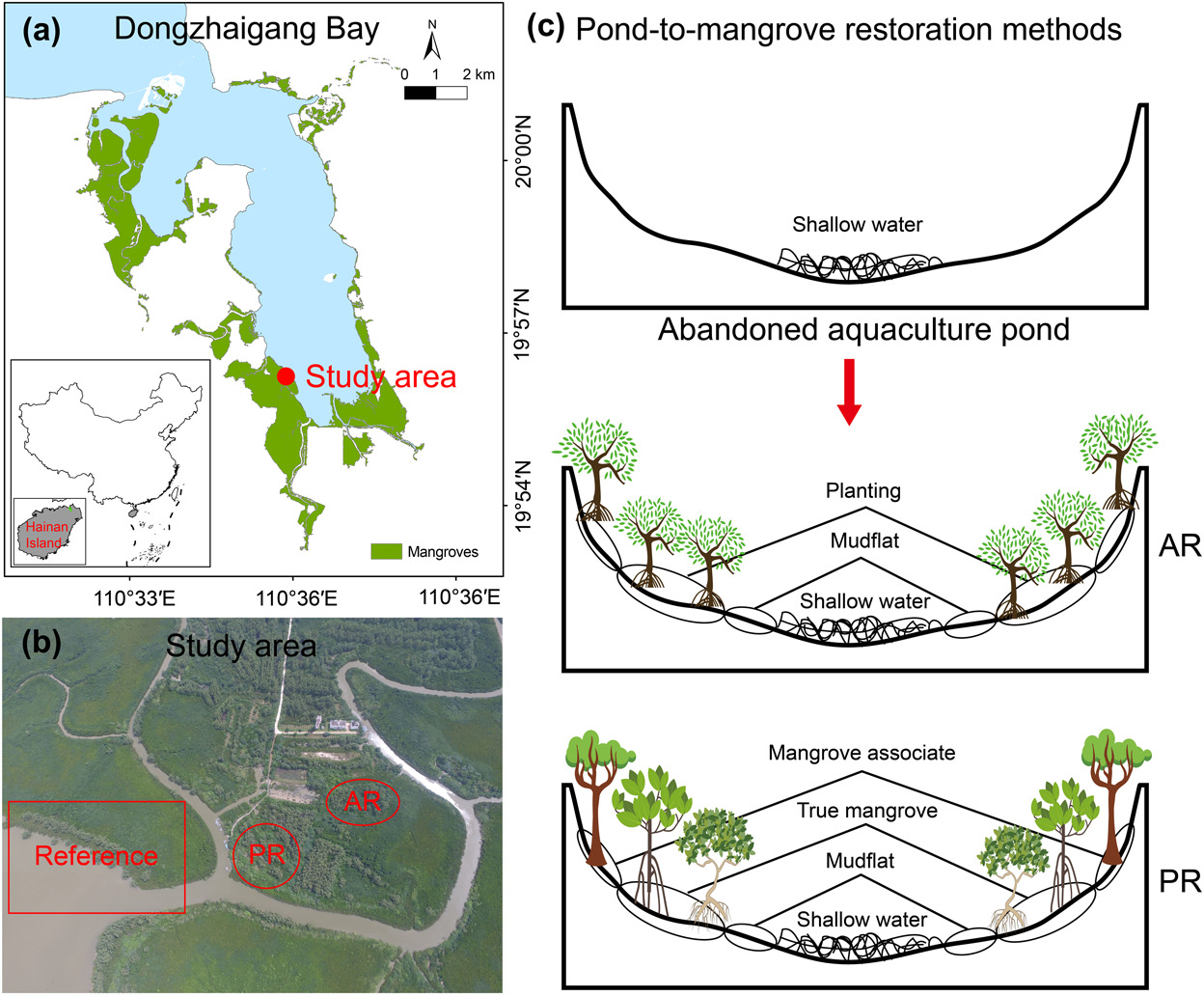A research team led by Professor Wenqing Wang from the College of the Environment and Ecology of Xiamen University has made new progress in the study of mangrove wetland restoration. The findings, which were published in Ecography with the title of “Biotic homogenization increases with human intervention: implications for mangrove wetland restoration” revealed the effects of different pond-to-mangrove restoration programs more than 20 years ago on the recovery of biodiversity. Based on the findings, scientific and theoretical basis for mangrove wetland restoration worldwide were provided.
Background
Mangrove ecosystems are one of the ecosystems on earth that supporting the highest biodiversity and with the highest value of ecosystem services. However, most of the mangroves worldwide has encountered problems like mangrove loss, degradation of ecosystem services, as well as inefficient protection and restoration as a result of human interventions and global climate change. The large-scale conversion of natural mangroves to aquaculture reduces species richness and diversity. Large areas of abandoned aquaculture ponds in areas where mangroves formerly predominated in China and southeast Asia represent important potential effective targets for mangrove restoration. In this case, it is an urgent need to design effective mangrove restoration techniques in tropical Asia.
Key findings
We empirically assessed the α-diversity (species richness) and β-diversity (variation in community composition) of mangrove, macrobenthos, fish and waterbird in Dongzhaigang bay, Hainan Island, China. We compared sites subjected to different pond-to-mangrove restoration programs more than 20 years ago (passive restoration without planting and active restoration with planting) to nearby reference site with natural mangrove forests and mudflats (Figure 1).
The main findings were shown as follows:
1) α-diversity values for both fish and waterbird communities (Figure 2), and β-diversity values for the mangrove, macrobenthos, and waterbird communities (Figure 3) were lower at the restoration sites than at the reference site, suggesting that the strong homogenizing effects of anthropogenic habitat alternation was still apparent after more than 20 years since aquaculture ceased.
2) Spatial turnover, not nestedness, dominated total β-diversity both across the whole study area and at individual sites (Figure 3), suggesting that multiple processes, such as environmental filtering, helped to shape multi-taxa community structures.
3) We found no evidence that planting in the abandoned ponds, in addition to standard hydrological restoration, supported greater species diversity of taxa like macrobenthos and waterbird than the naturally regenerated site.
Our results underline the importance of avoiding the conversion of natural mangrove stands to aquaculture wherever possible, and recommend passive restoration as a priority, and supplemented by active restoration when necessary in mangrove restoration.

By Yamian ZHANG | College of the Environment and Ecology, Xiamen University